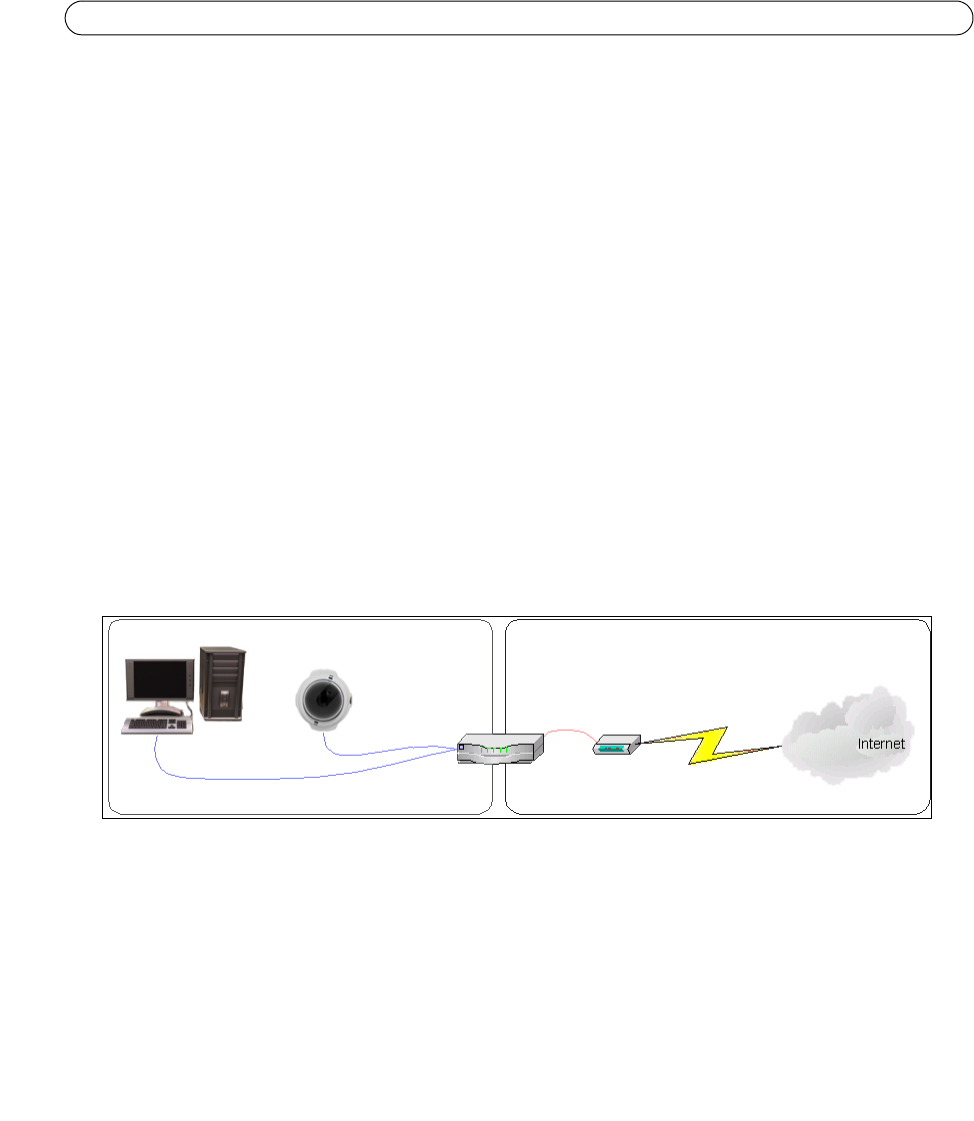
31
AXIS Q7406 - System Options
Use the following NTP server address - to create manual settings, check this radio button and enter the host name or IP
address of the NTP server.
Host Name Configuration - The video encoders can be accessed using a host name, instead of an IP address. The host
name is usually the same as the assigned DNS Name.
For more information, please see Security, on page 27.
Link-Local IPv4 Address - This is enabled by default and assigns the video encoders an additional IP address for use with
UPnP
™. The camera can have both a Link-Local IP and a static/DHCP-supplied IP address at the same time - these will not
affect each other.
HTTP and HTTPS - The default HTTP/HTTPS port numbers (80 and 443 respectively) can be changed to any port within the
range 1024-65535. This is useful for simple security port mapping, for example.
NAT traversal (port mapping) for IPv4 - A broadband router allows devices on a private network (LAN) to share a single
connection to the Internet. This is done by forwarding network traffic from the private network to the “outside”, that is, the
Internet. Security on the private network (LAN) is increased since most broadband routers are pre-configured to stop attempts
to access the private network (LAN) from the public network/Internet.
Use NAT traversal when your video encoders are located on an intranet (LAN) and you wish to make it available from the
other (WAN) side of a NAT router. With NAT traversal properly configured, all HTTP traffic to an external HTTP port in the NAT
router is forwarded to the camera.
Notes:
• For NAT traversal to work, this must be supported by the broadband router.
• The broadband router has many different names: “NAT router”, “Network router“, Internet Gateway”, “Broadband
sharing device” or “Home firewall” but the essential purpose of the device is the same.
Enable/Disable - when enabled, the video encoders attempt to configure port mapping in a NAT router on your network, using
UPnP™. Note that UPnP™ must be enabled in the camera (see System Options > Network > UPnP).
Use manually selected NAT router - select this option to manually select a NAT router and enter the IP address for the router
in the field provided.
If a router is not manually specified, the video encoders automatically search for NAT routers on your network. If more than
one router is found, the default router is selected.
Alternative HTTP port - select this option to manually define an external HTTP port. Enter the port number in the field
provided. If no port is entered here a port number is automatically selected when NAT traversal is enabled.
Notes: • An alternative HTTP port can be used/be active even if NAT traversal is disabled. This is useful if your NAT router
does not support UPnP and you need to manually configure port forwarding in the NAT router.
• If you attempt to manually enter a port that is already in use, another available port is automatically selected.
• When the port is selected automatically it is displayed in this field. To change this enter a new port number and
click Save.
LAN (intranet)
WAN (internet)
Broadband
(NAT)
router
ISP


















